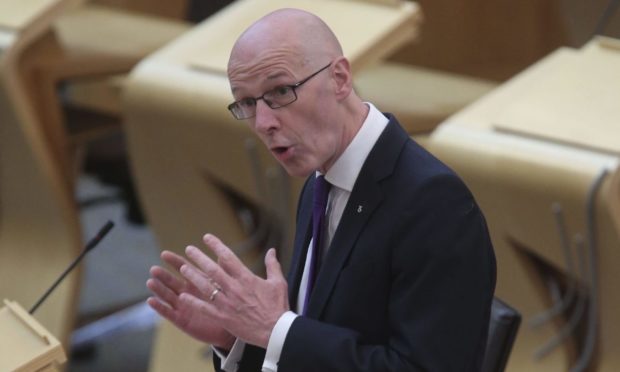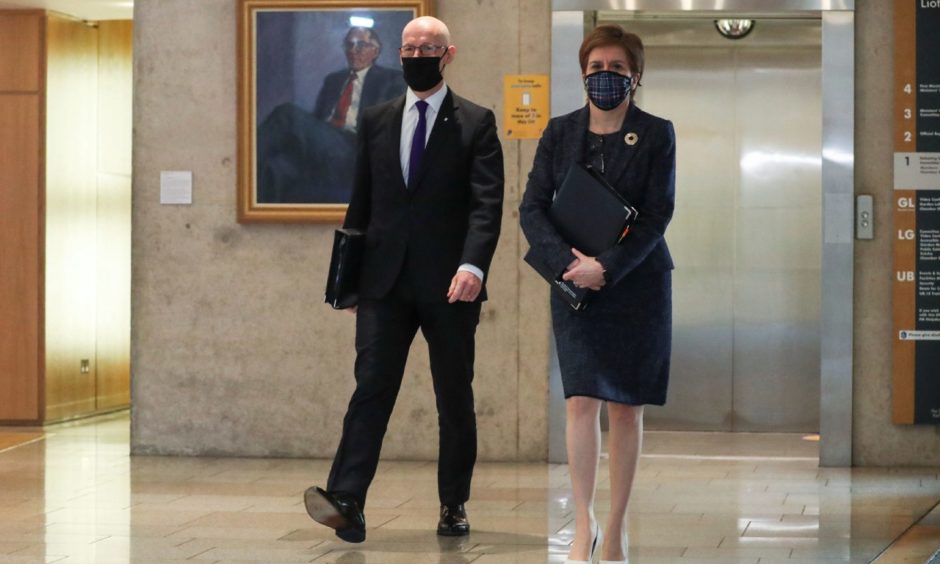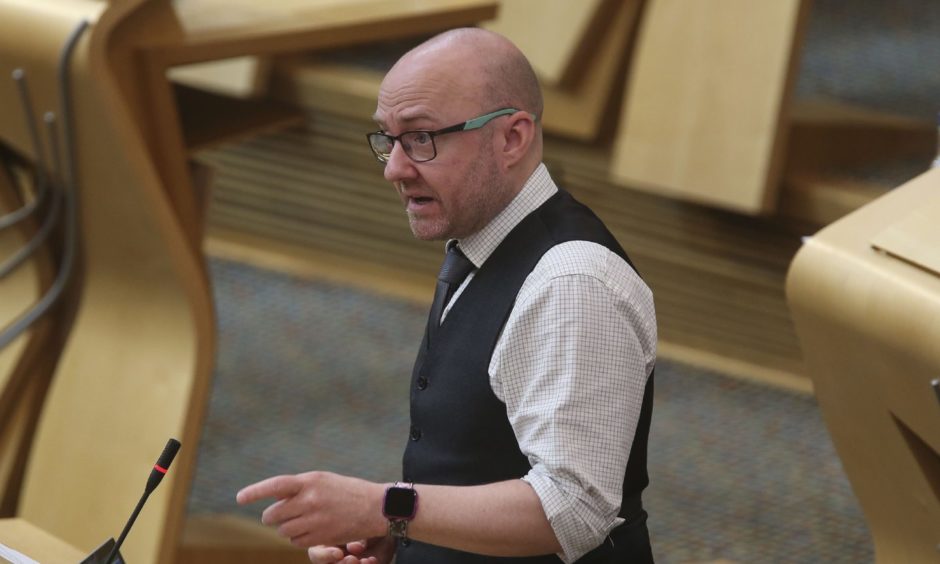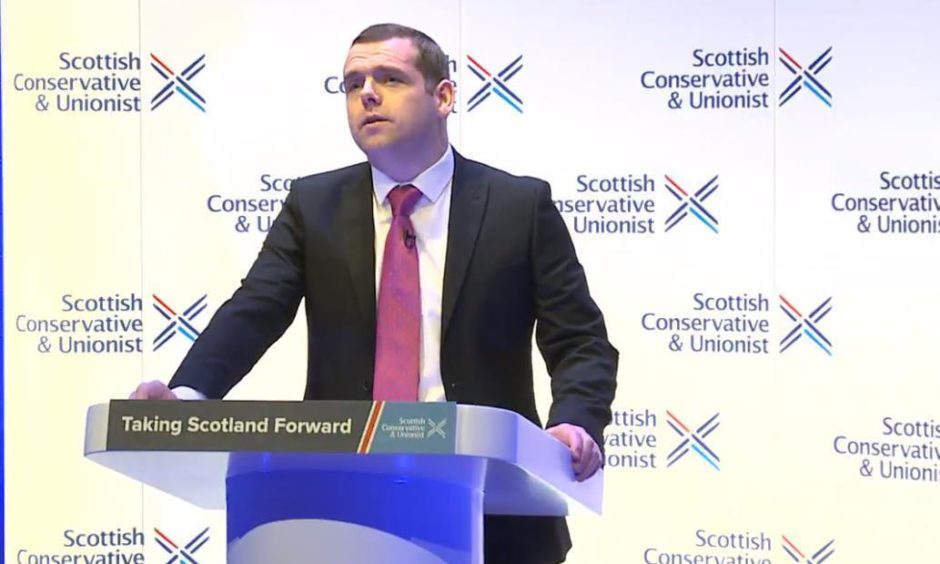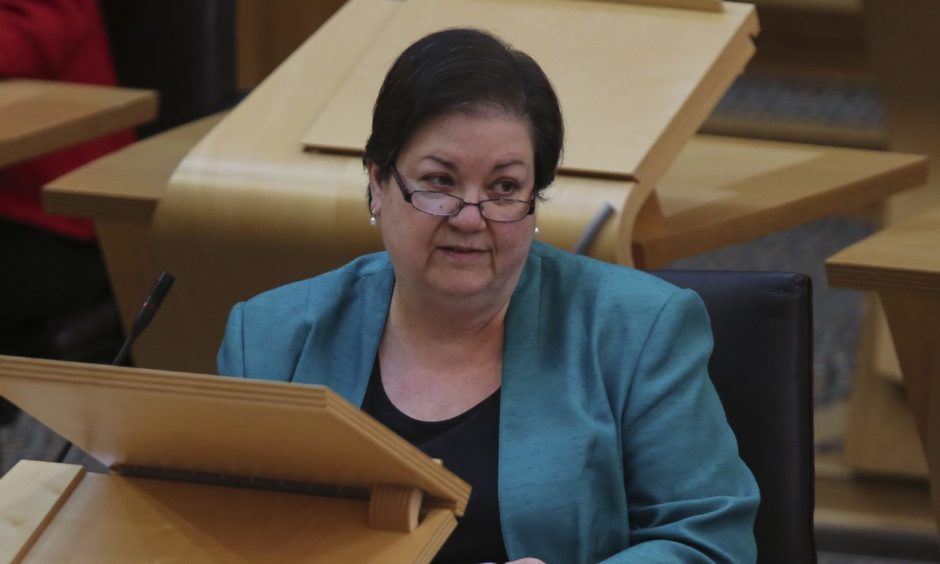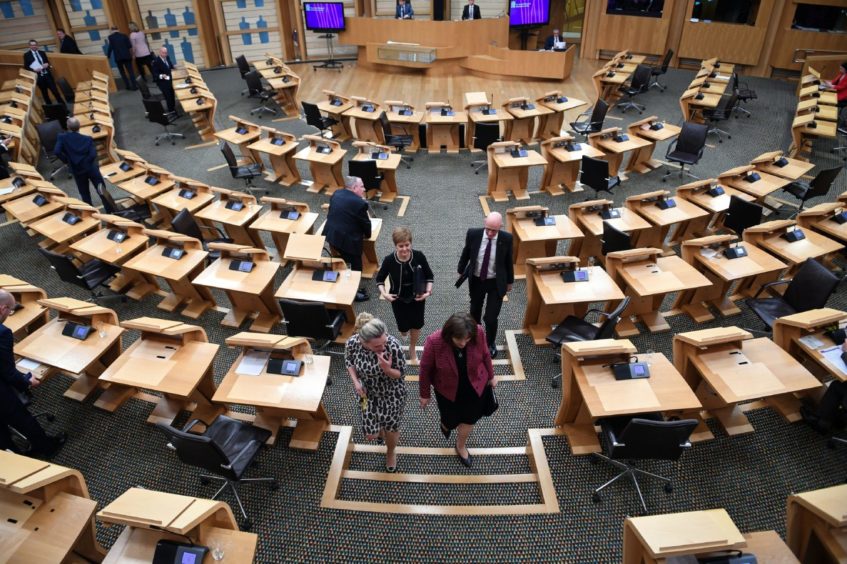John Swinney has narrowly survived a vote of no confidence in his role as deputy first minister by 57 votes to 65, despite his party being branded “secretive and outrageous” in its behaviour towards the Alex Salmond inquiry.
Mr Swinney has come under fire over lengthy delays to the publication of legal advice relating to Mr Salmond’s judicial review against the Scottish Government but insisted the motion of no confidence was “entirely baseless”.
The Scottish Conservatives, who submitted the motion, argued the Perthshire North MSP should be held accountable for “undermining the credibility of our Scottish Parliament and the ability of this parliament to hold the government to account”.
The motion was first tabled as a threat three weeks ago and led to Mr Swinney releasing the legal advice relating to Mr Salmond’s judicial review, after four months and two parliamentary votes, when it became clear opposition parties would back it.
A Holyrood inquiry is currently examining how the government botched a probe into sexual misconduct allegations made against Mr Salmond in 2018 and the doomed legal fight that left taxpayers with a £512,000 bill for his legal costs.
Mr Salmond denied all allegations against him and won a judicial review of the government’s complaints process in 2019, which judges found to be biased.
Despite Mr Swinney releasing the legal advice, the Conservatives pushed on with the vote and accused him of ignoring MSPs’ wishes, supplying evidence only after Nicola Sturgeon appeared at committee, and failing to supply papers sought by the inquiry.
However, unity between the opposition parties fell away after the Scottish Greens – who often hold the balance of power at Holyrood – dropped their support and described pushing ahead with the vote as a “cheap political stunt”.
Co-leader Patrick Harvie told MSPs that had Mr Swinney continued to “dig in his heels” about publishing the legal advice, his position “would have been untenable”.
But he added: “The shallow game of winning political scalps should not be anyone’s priority, and the Greens will have no part in it.”
Mr Swinney, who is also education secretary, faced another vote of no confidence last year following a debacle around exam grades for school pupils during the pandemic but also survived as a result of support from the Greens.
Scottish Conservative leader Douglas Ross accused Mr Harvie of being “bought and sold for SNP gold” after the Greens dropped their support for the latest no confidence motion days after the SNP agreed to a number of his budget demands.
“Instead of considering the weight of evidence against John Swinney, the Greens have traded principles for an SNP budget deal,” Mr Ross said.
Timeline of events
- March 2 – An initial batch of legal advice is released the day before Ms Sturgeon’s first appearance at the inquiry.
- March 4 and 5 – Two more batches are released following pressure from the committee. It is unable to get records from a meeting in November 2018 between Ms Sturgeon, legal council and top civil servants.
- March 8 – A budget deal is struck between the SNP and the Greens.
- March 9 – The Greens confirm they will not support the motion. Later that day, the committee says it is “not reassured” it has the evidence it needs.
Committee member Jackie Baillie reminded MSPs of Nicola Sturgeon’s promise in 2019 that the inquiry would have all the documentation it required, and said motions of no confidence are a mechanism to hold the government to account.
“What the committee has had is partial information, delayed information, and in some cases, no information at all,” she said. “The government has treated the committee of this parliament with contempt. And it has treated the parliament with contempt too.”
Ms Baillie said the Lord Advocate had not been asked permission to release the legal advice and claimed this showed there was never an intention of handing it over – something she said was the latest in a pattern of “obstruction, secrecy and contempt for the institutions of this parliament”.
“The motion of no confidence may be in John Swinney,” she said. “But I am clear it is in the behaviour of the secretive National Party that is truly outrageous.”
Mr Swinney denied that he had only released the legal advice to save his job and said “outlandish conspiracy theories” from Mr Salmond meant that the “balance of public interest had shifted” in favour of its publication.
Warts and all
He said it had previously been his view that the government could provide “the information they needed to understand what happened” while avoiding the precedent for future governments of waiving privilege.
“That is why I took the unprecedented decision to share with the committee in confidence in December a detailed submission that explained the context of legal advice during the judicial review,” Mr Swinney said.
“I believed then that such an approach could fulfil our obligation to parliament and the committee without waiving legal privilege and therefore protecting the interests of future governments.”
Mr Swinney insisted the Scottish Government has now released “all of the formal written advice notes received from external counsel”, as well as emails and other documents, but said minutes of meetings requested by the committee do not exist.
He said what has been released “paints a clear picture, warts and all – no embarrassment for the Government is spared on the publication of these documents”.
“We’ve taken the extraordinary and unprecedented step of publishing formal legal advice of the kind which no previous Government in Scotland has done,” Mr Swinney said.
“And we have done so in response to the requests of the committee and motions passed by parliament. On any fair interpretation of what the Government has done, the Tories’ pursuit of this motion today is now entirely baseless.”
